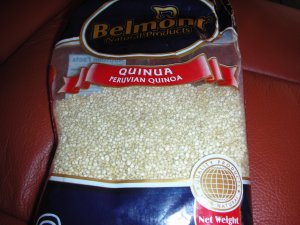FAO, the Food and Agricultural Organization of the United Nation, has officially declared 2013, “International Year of the Quinoa.”
In the Inca language, quinoa, (pronounced KEEN-WAH) means “mother grain.” People living on the mountain plateaus and valleys of Peru, Bolivia, Ecuador and Chile have been eating quinoa for the past 5,000 years. It made its US debut in the 1970’s.
Quinoa is a grain like seed that was first cultivated in the Andean Mountains of South America where, thanks to its significant nutritional value and hardiness as a crop, was crucial in local diets. Quinoa was one of the few foodstuffs that could thrive under the unforgiving environmental conditions of the high, mountainous regions. Apart from the seeds, the leaves are also edible. Until the Spanish Conquistadores prohibited its consumption and cultivation in the 16th century, the Incas also used quinoa in sacred, religious ceremonies. The Spanish considered this practice heretical and a threat to Christian faith and teachings. Unfortunately, they never learned how to cook, prepare or eat quinoa. The seeds are naturally coated in a bitter tasting chemical called “saponins” which prior to cooking, needs to be washed off. Without this step, not surprising, the Spanish found the taste revolting. Instead of quinoa, the natives were forced to plant less nutritious crops: corn, barley and potatoes. The Spanish had no way of knowing that “saponins,” which made quinoa unpalatable, made it a hardy crop. The bitter taste was nature’s protection against preying birds, other pests, thus assuring bountiful harvests. Disobeying the Spanish prohibition, some natives grew quinoa illicitly in fields located at higher altitudes, away from prying eyes. Because of the Spanish Conquistadores, quinoa eventually fell into centuries of obscurity.
Fast forward….. quinoa is considered a whole grain that can be prepared in the same manner as rice or barley but with a higher protein content than most cereals. It has higher levels lysine than wheat and its amino acid content is considered well balanced for both human and animal nutrition.
Preparation is easy; cooks in less time – just 15 minutes – than other whole grains. For one cup of quinoa you need two cups of liquid, add a bit of olive oil, sea salt and lemon juice and – yum! It is gluten-free, cholesterol free whole grain, is kosher for Passover and is almost always organic.

Just FYI I have linked to this post
Reblogged this on Dralonseed.